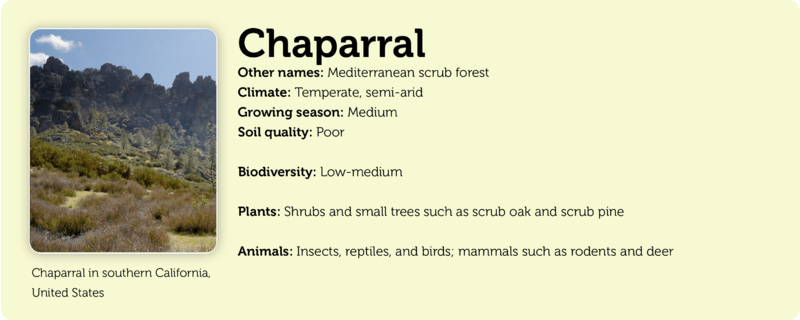Featured
Abiotic Factors Of Chaparral Biome
Abiotic Factors Of Chaparral Biome. It can be up to 100 degrees in the summer months. About 300 n and s of the equator.

It can be up to 100 degrees in the summer months. Abiotic removal of trees and root systems will degrade the soil, making the upper layers more vulnerable to being washed out by rain. Posted by 4 years ago.
There Is From 10 To 17 Inches Of Rainfall Annually In The.
This degrades the soil stability and soil quality, which. Biotic factors include foxes, ferns, trees, birds, ticks, broomrapes, pumas, coyotes, and. In this environment there are many organisms, biotic (living) and abiotic (nonliving).
Biotic Factors Of The Chaparral Biome Include Kangaroo Rats, Coyotes,.
Biomes have biotic factors (factors that are alive) and abiotic factors (factors that are not alive). Hot and dry summers with cool and moist. Plants that live in the chaparral need adaptations to help them survive.
How Are Chaparral Plants Adapted To Abiotic Factors?
In conclusion, organisms depend on. In this biome, abiotic factors contribute to the phosphorus cycle and the sulfur cycle. The chaparral is quite diverse.
This Is Usually Because Human.
More likely to be found in chaparral and coastal sage scrub. Some biotic factors in chaparral biome are: Most of the abiotic factors are relatively consistent throughout the different locations.
Like Most Small Trees And Bushes In The Chaparral Environment The Olive Tree Is Evergreen, With Small Leaves And Rough, Thick Grey Bark.
Abiotic removal of trees and root systems will degrade the soil, making the upper layers more vulnerable to being washed out by rain. Abiotic factors of the tropical. Posted by 4 years ago.
Comments
Post a Comment